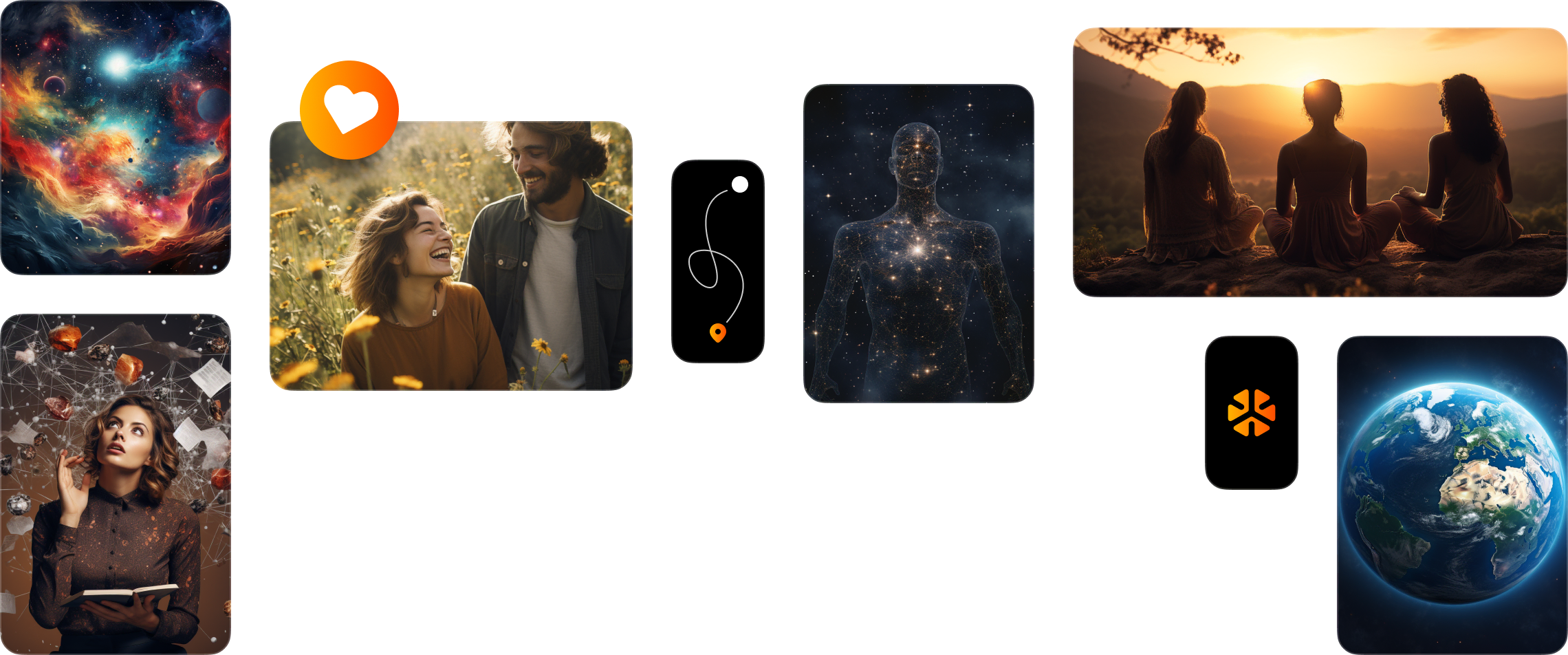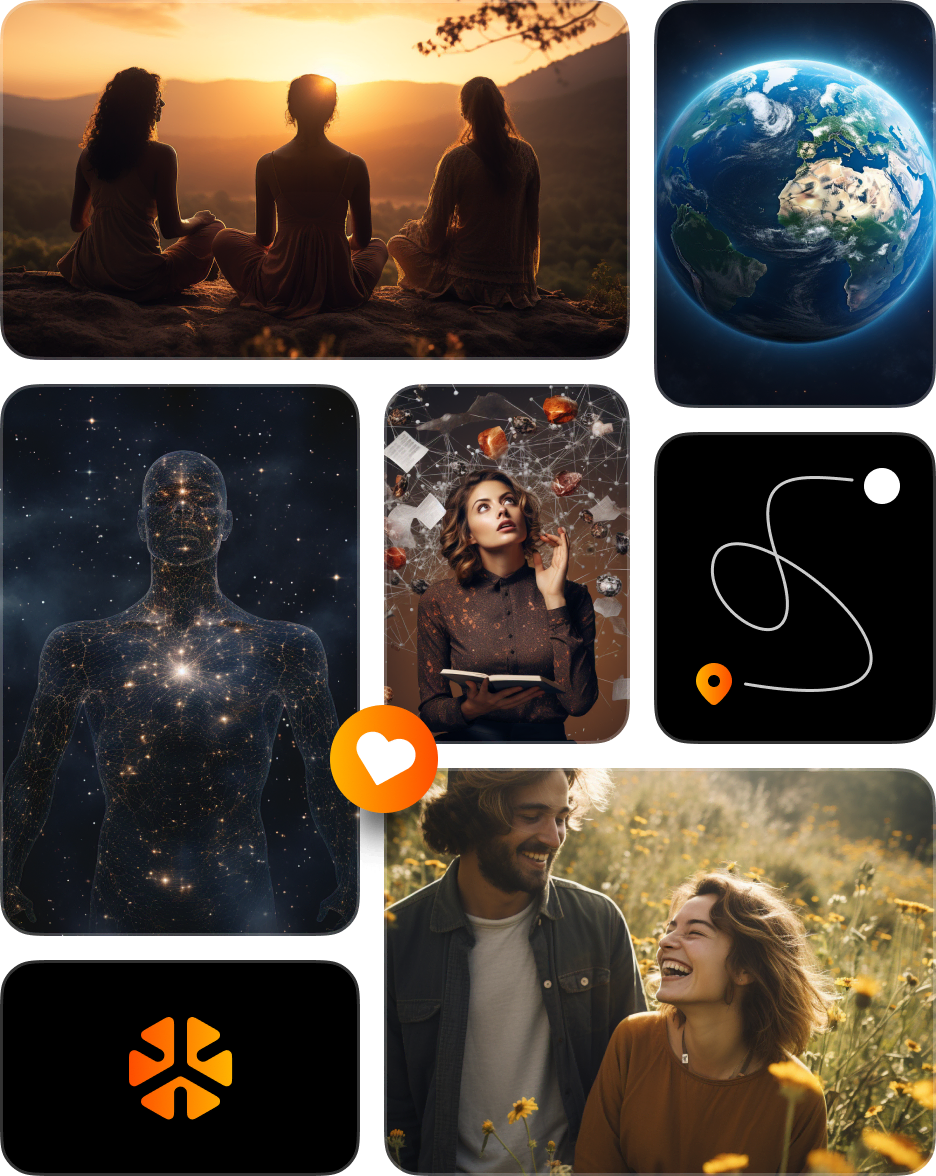Introduction to Reading a Human Design Chart
Understanding how to read a Human Design chart, also known as a BodyGraph, can be a transformative tool for self-discovery. This unique chart represents your energetic blueprint, showing how you’re designed to interact with the world, make decisions, and communicate. Let’s take a step-by-step journey through the process of reading a Human Design chart.
The Basic Structure of a Human Design Chart
A Human Design chart is a visual representation of your energetic configuration, based on your birth information. It consists of various components:
Nine Centers: Similar to the chakra system, representing different aspects of your being.
Thirty-Six Channels: Lines connecting the centers, representing the flow of energy.
Sixty-Four Gates: Points along the channels representing specific energies.
Type, Profile, and Authority: Additional elements providing insights into your design.
The BodyGraph is divided into two parts: the Design (unconscious, represented in red) and the Personality (conscious, represented in black). The Design side represents inherited traits, while the Personality side signifies traits we are aware of and can use consciously. Each element in a Human Design chart can be either defined (colored in) or undefined (white). Defined elements represent consistent and reliable aspects of your nature, while undefined elements indicate areas where you are open and adaptable.
Understanding Your Type and Strategy
The second step in reading your Human Design chart is understanding your Type and Strategy. Your Type (Generator, Projector, Manifestor, Reflector) is determined by specific configurations of the centers in your chart, and it’s a fundamental part of your design. Each Type has a unique Strategy for decision-making:
Generators: Wait to respond.
Manifestors: Inform before acting.
Projectors: Wait for an invitation.
Reflectors: Wait a full lunar cycle before making significant decisions.
Your Type and Strategy serve as a practical guide for decision-making, interaction, and energy use. By aligning with your Type and Strategy, you can navigate life with less resistance and more ease, making decisions that are correct for you. It’s crucial to note that Strategy is not a mental process; it’s about tuning in to your body’s intelligence. It requires practice and patience to start living according to your Strategy, but it’s a rewarding journey towards authenticity.
Recognizing Your Authority
The third step in interpreting your Human Design chart is recognizing your Authority. Authority in Human Design refers to your unique decision-making process, which guides you towards decisions that are correct for you. Your Authority could be linked to various centers in your BodyGraph, such as the Sacral, Solar Plexus, Spleen, Heart, or G Center, or it might be determined by your environment or time (as in Reflectors).
Understanding and following your Authority is key to living out your design. It offers a way to bypass the mind’s conditioning and align with your inner truth. Your Authority is not something you think about; it’s something you feel in your body. It’s about trusting your body’s wisdom to guide your decisions.
Deciphering the Centers, Channels, and Gates
The fourth step in reading your Human Design chart involves deciphering the Centers, Channels, and Gates.
Centers: Represent different aspects of your being, such as the mind, emotions, communication, identity, willpower, life-force energy, intuition, and pressure to act. Defined centers (colored in) represent areas of consistent, reliable energy in your life, while undefined centers (white) are areas where you’re more adaptable, absorbing and amplifying energy from the world around you.
Channels: The lines connecting two centers show the natural flow of your life force. Each channel carries a specific energy type and has a particular impact on your behavior and life experience.
Gates: Represented by the numbers on your chart, gates are energies that can be expressed when the gate is activated. The combination of a defined channel and activated gate can significantly influence how you express the energy of that Center.
Understanding Your Profile and Incarnation Cross
The fifth step in understanding your Human Design chart is getting to know your Profile and Incarnation Cross.
Profile: Represented by two numbers, it offers insights into how you interact with the world. It provides a perspective on your life’s purpose and lessons.
Incarnation Cross: Determined by the positioning of the Sun and Earth in your chart, it represents your life’s overarching theme or purpose. It gives you a sense of direction and provides context for your life experiences.
Both your Profile and Incarnation Cross offer valuable insights into your purpose in life, helping you understand your unique path and role in the world.
Examining Defined and Undefined Centers
In the sixth step, we delve deeper into defined and undefined centers in your Human Design chart.
Defined centers: Areas of consistent energy and reliability, expressing aspects of your nature you can rely on consistently.
Undefined centers: Areas where you are open to influences from the world around you, offering wisdom and learning opportunities but also vulnerability to conditioning.
Reading the Channels and Gates
The seventh step in understanding your Human Design chart is reading the Channels and Gates.
Channels: Show a fixed and reliable energy flow between two centers, influencing behavior and life experience.
Gates: Represent potential energies that can be expressed when activated, each associated with an I Ching hexagram for additional insights.
Understanding the Not-Self Theme
An important aspect of your Human Design chart is understanding your Not-Self Theme.
- Not-Self Theme: Indicates resistance or frustration when you’re not living in alignment with your true nature. Each Type has a unique Not-Self Theme: frustration for Generators and Manifesting Generators, bitterness for Projectors, anger for Manifestors, and disappointment for Reflectors.
Embracing the Conditioning Field
Next, it’s crucial to recognize the impact of the conditioning field on your Human Design chart. The conditioning field refers to the influence of the environment and other people on your undefined centers. This conditioning can shape your behavior, decision-making, and perceptions in profound ways. Undefined centers are sensitive and receptive to outside energies, which can both expand your understanding of the world and potentially lead to conditioned behavior that doesn’t align with your authentic self.
Interpreting Variable and Colorings
The last element we’ll cover in reading your Human Design chart is the Variable and the Colorings. These advanced aspects of Human Design offer more detailed insights into your unique way of processing information and engaging with the world.
Variable: Determined by the colorings of your Nodes, revealing your specific cognitive orientation and how you’re designed to focus, absorb information, and share your knowledge.
Colorings: Represented by the colored bars next to your Profile and Centers, providing nuanced insights into the functioning of your Centers, Channels, and Gates.
Conclusion: Your Unique Design
Reading a Human Design chart is a journey of self-discovery. Each element in your chart – your Type, Strategy, Authority, Centers, Channels, Gates, Profile, and Incarnation Cross – come together to form your unique design. This chart is your unique energetic blueprint, guiding you on how to navigate life, make decisions, and fulfill your potential. By understanding your chart, you gain valuable insights into your true nature, empowering you to live a life that aligns with who you truly are.
Remember, the key to Human Design is experimentation. It’s not about accepting a set of rules but about experimenting with these insights and discovering what feels correct for you. This practice can lead you towards authenticity, self-understanding, and a fulfilling life.




















